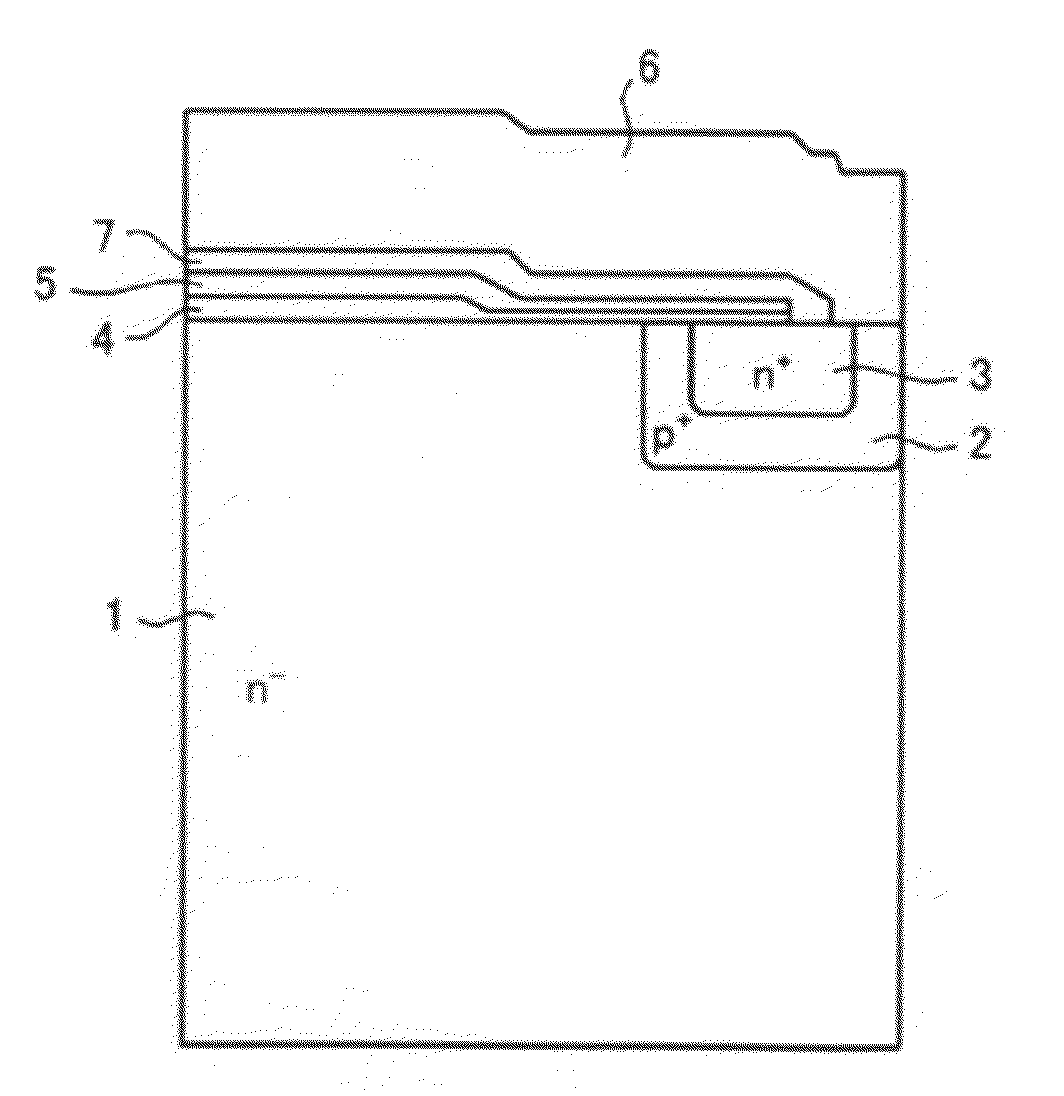Method of manufacturing semiconductor element
a manufacturing method and semiconductor technology, applied in the direction of semiconductor devices, electrical devices, transistors, etc., can solve the problems of inability to use the sheet, the p-layer cannot be highly activated, and the traces of work damage caused by laser irradiation can be found on the surface of the wafer, so as to suppress the increase in the temperature of the substrate, prevent the occurrence of device failure, and reduce the cooling effect by heat conduction to the stage
- Summary
- Abstract
- Description
- Claims
- Application Information
AI Technical Summary
Benefits of technology
Problems solved by technology
Method used
Image
Examples
first embodiment
[0057]A first embodiment uses lithium as a dopant to form n+-layer 10a in the ion-implantation step to form an n-buffer layer and a p+-collector layer as shown in FIG. 16. In the case where the n+-layer 10a and the p+-layer 8a are activated and a top surface contact layer coming into contact with the bottom surface electrode is provided following this ion-implantation step, two all-solid-state YAG2ω lasers (wavelength: 532 nm) are used to carry out laser annealing in the step of activating the top surface contact layer.
[0058]FIG. 1 is a view showing a pulse shape of a pulsed laser beam irradiated from each of the two laser irradiation devices. As is shown in FIG. 1, when laser beams are irradiated, the full-width at half maximum (corresponding to pulse width) of the both two lasers is, for example, 100 ns. Also, the irradiation energy density of each of the first laser (first pulse) and the second laser (second pulse) is, for example, 1.5 J / cm2, so that the laser irradiation energy ...
second embodiment
[0064]In a second embodiment, a semiconductor laser (wavelength: 800 nm) is used instead of one of the two all-solid-state YAG2ω lasers (wavelength: 532 nm) used in the first embodiment. Lithium is used as a dopant to form the n+-layer 10a.
[0065]FIG. 5 is a view showing the pulse shape of a pulsed laser beam irradiated from the all-solid-state YAG2ω laser and the continuous oscillation of the semiconductor laser. As shown in FIG. 5, when laser beams are irradiated, the full-width at half maximum (corresponding to the pulse width) of the all-solid-state YAG2ω laser is, for example, 100 ns. Also, the irradiation energy density of the all-solid-state YAG2ω laser is, for example, 1.5 J / cm2. During wafer processing, a laser beam is irradiated to the entire wafer surface from the semiconductor laser at an irradiation energy density of, for example, 5 J / cm2. Also, the overlapping ratio of the pulses of the all-solid-state YAG2ω laser is, for example, 90%,
[0066]These laser irradiation cond...
PUM
 Login to View More
Login to View More Abstract
Description
Claims
Application Information
 Login to View More
Login to View More - R&D
- Intellectual Property
- Life Sciences
- Materials
- Tech Scout
- Unparalleled Data Quality
- Higher Quality Content
- 60% Fewer Hallucinations
Browse by: Latest US Patents, China's latest patents, Technical Efficacy Thesaurus, Application Domain, Technology Topic, Popular Technical Reports.
© 2025 PatSnap. All rights reserved.Legal|Privacy policy|Modern Slavery Act Transparency Statement|Sitemap|About US| Contact US: help@patsnap.com



